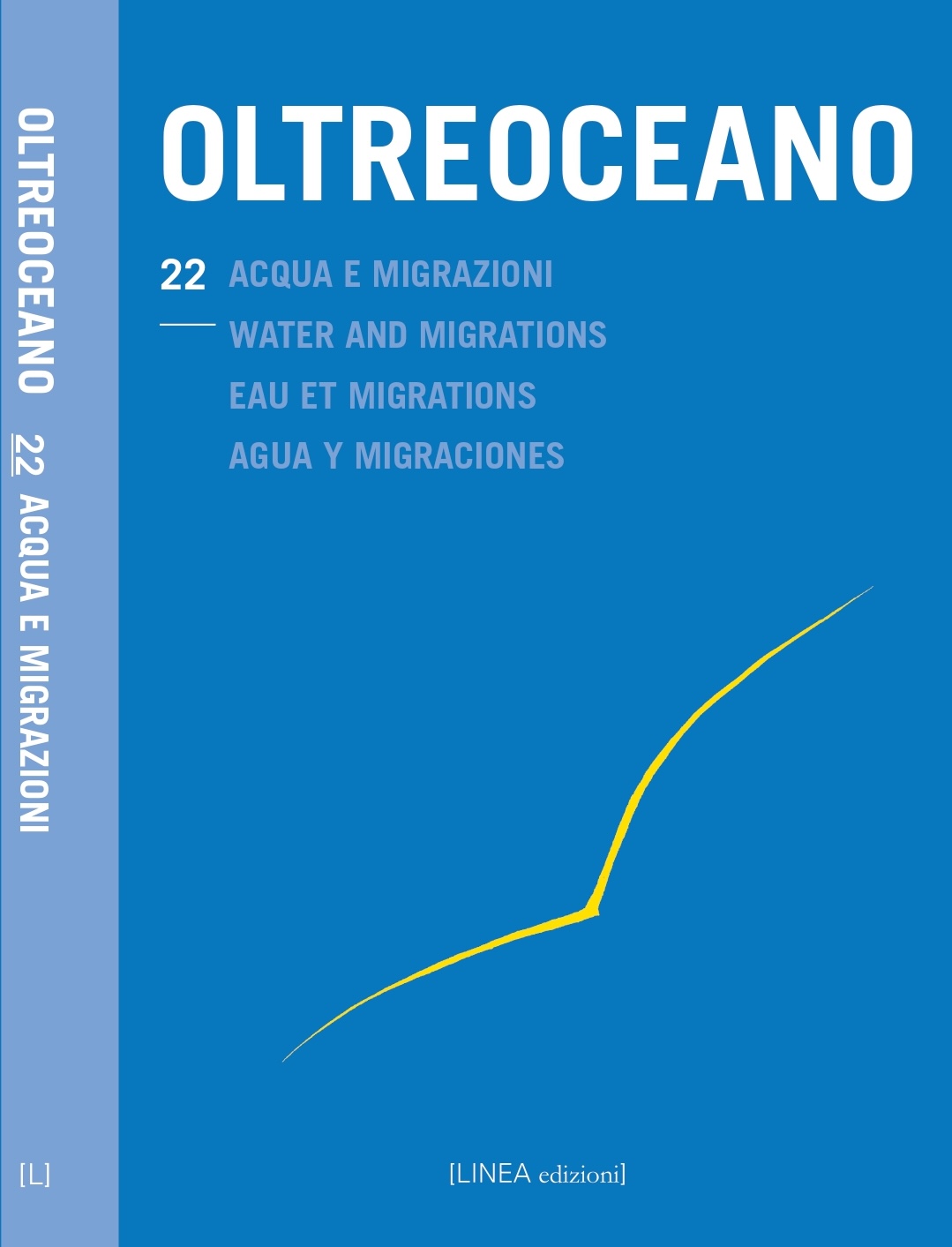The Nucleus “Agua” in the Phraseology of American Spanish
DOI:
https://doi.org/10.53154/Oltreoceano93Keywords:
Phraseology, Locutions, Collocations, Water, American SpanishAbstract
The aim of this article is to analyse the phraseological units (PU) that have been created around the nucleus “water” in the different varieties of American Spanish in order to observe how this element, essential in human life, reflects the cultural universe, worldviews, beliefs, stereotypes and metaphorical competence of the linguistic communities involved. While the meaning of the referent will, on the one hand, facilitate the transparency of the phraseologisms examined, on the other hand, we will find constructions which are partially opaque in their meaning due to the projection of the image generated from a common name. At the same time, we will examine the existence of synonyms, geo-synonyms and antonyms among the PUs of the different varieties of American Spanish, as well as the polysemic constructions, variants, barbarisms and indigenisms present in them.
Downloads
References
Academia Argentina de Letras (2008): Diccionario del habla de los argentinos. Buenos Aires: Emecé.
Academia Puertorriqueña de la Lengua Española (2002): Tesoro lexicográficos del español de Puerto Rico. Recuperado de https://tesoro.pr/busqueda (Visitado el 18/05/2023).
ASALE (2010): Diccionario de americanismos. Recuperado de https://www.asale.org/damer (Visitado el 16/5/2023).
Buitrago, A. (2002): Diccionario de dichos y frases hechas. Madrid: Espasa.
Corpas Pastor, G. (1996): Manual de fraseología española. Madrid: Gredos.
Coseriu, E. (1986): Principios de semántica estructural. Madrid: Gredos.
Gagini, C. (20084): Diccionario de costarriqueñismos. San José: Editorial Costa Rica.
García-Page Sánchez, M. (2008): Introducción a la fraseología española. Estudio de las locuciones. Barcelona: Anthropos.
Gómez de Silva, G. (2001): Diccionario breve de mexicanismos. Recuperado de https://www.academia.org.mx/consultas/obras-de-consulta-en-linea/diccionario-breve-de-mexicanismos-de-guido-gomez-de-silva (Visitado el 17/5/2023).
Luque Toro, L. (2006): La colocación verbo-objeto: aspectos de su traducción al italiano. En Actas del V Congreso andaluz de lingüística general (1461-1468). Granada: Granada Lingüística.
Penadés Martínez, I. (2005). Diccionario de locuciones adverbiales para la enseñanza del español. Madrid: Arco/Libros.
Quesada Pacheco, M. Á. (20074): Nuevo diccionario de costarriqueñismos. San José: Editorial Tecnológica de Costa Rica.
RAE (201423): Diccionario de la lengua española. Recuperado de https://dle.rae.es/ (Visitado el 15/5/2023).
RAE (2009): Nueva gramática de la lengua española, vol. 2. Madrid: Espasa.
Romero, M. (2013): Diccionario de salvadoreñismos. El Salvador: Editorial Delgado.
Ronconi, G. (2005): Dal cervello alla mente. L’uomo e le sue immagini. Padova: Il Poligrafo.
Ruiz Gurillo, L. (2001): Las locuciones en español actual. Madrid: Arco/Libros.
Santamaría, F. J. (2005): Diccionario de mejicanismos. México: Porrúa.
Siegel, D. J. (2001): La mente relazionale. Neurobiologia dell’esperienza interpersonale. Milano: Cortina.
Ullman, S. (1963): Semantic Universals. En J. H. Greenberg (ed.), Universals of Language (215-236). Cambridge: MIT Press.
Downloads
Published
How to Cite
Issue
Section
License

This work is licensed under a Creative Commons Attribution-NonCommercial-ShareAlike 4.0 International License.
The authors undertake to comply with the following conditions, which are considered accepted at the time of submission of their contributions.
The sending of a text implies that it is unpublished and not submitted to be published elsewhere.
1. If accepted, the author shall confer on the publisher the right to publish and distribute it both in paper form and in the online electronic edition. The published articles will be downloadable and made available in open access.
2. Provided that it correctly indicates that the first publication took place in the journal Oltreoceano. Rivista sulle migrazioni the author has the right to: a) reproduce the article in separate extracts or collected in a volume; b) publish the article on their personal website or teaching site provided that these sites are of a non-commercial nature; c) deposit the article in online archives of a non-commercial nature, linked to the institution they belong to or as part of projects for the non-commercial dissemination and open access of scientific works.
The use of contributions by third parties, for commercial or otherwise unauthorized purposes, is not allowed. The publisher declines all responsibility for the unauthorized use of the material published in the journal.












